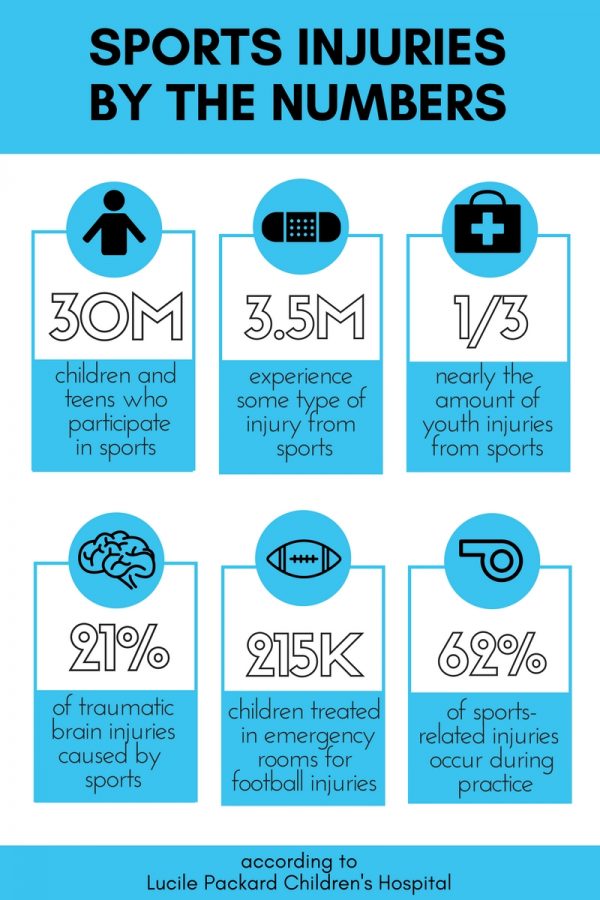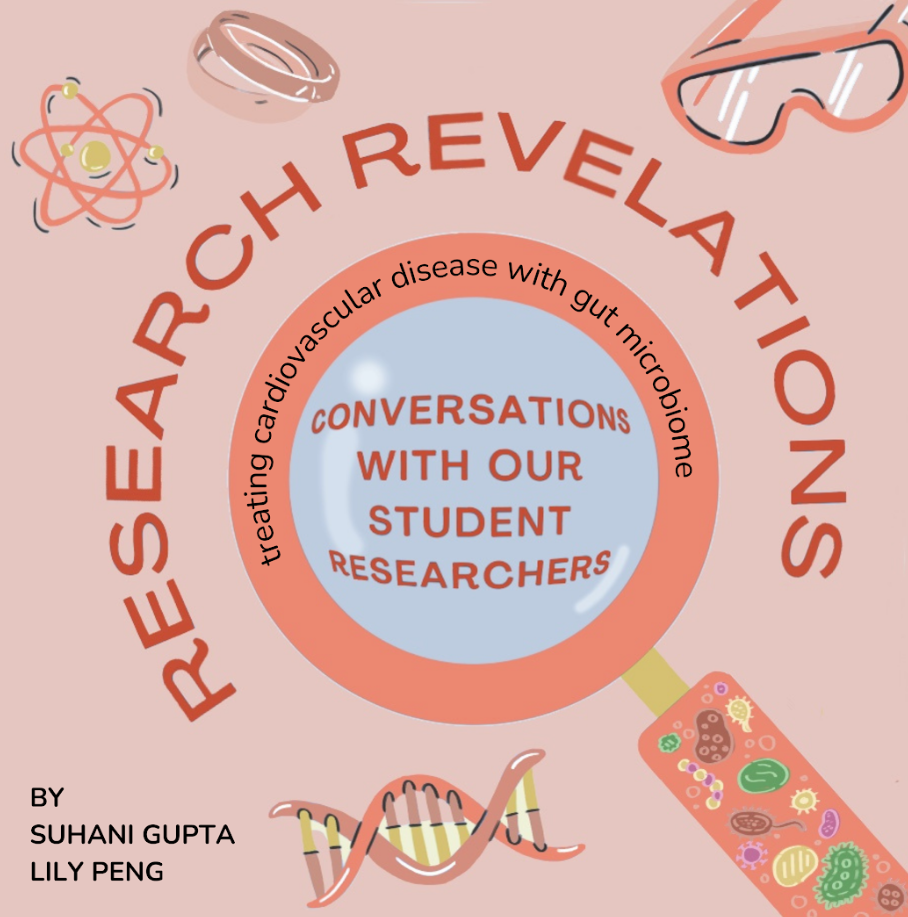The good, the bad and the injured: a look into athletic injuries and prevention of them
March 26, 2017
Sports Injuries
In December of 2013, tennis-playing junior Elizabeth Schick had her first surgery for a multitude of sports-related injuries, including a bone contusion, an ankle sprain, and torn ligaments. Prior to the surgery, doctors had told her that it was likely a minor issue, but eventually, the injuries were found on an MRI.
“I had another fall on the tennis court, I crashed into a bench. I went and played nationals a month later, and when I came back, I could barely walk,” she said. Elizabeth underwent three separate surgeries because of her injuries. Now, she says, Elizabeth alters her conditioning to prevent future injuries.
A sprain is an injury to the ligament, the bands which connect bones in a joint. Stretching ligaments too far can deform or tear them. Strains are injuries to muscle fibers or tendons, which anchor muscles to bones. Strains are often referred to as “pulled muscles,” because overuse can lead to tears in the muscle.
The National Institutes of Health states that sprains and strains, ligament tears, tendon tears, dislocated joints, and fractured bones are some common types of physical health complications from sports.
Among the most common types of injuries, according to WebMD, are ankle sprains, hamstring strains, shin splints, knee injuries, including ACL tears and Patellofemoral syndrome, and the tennis elbow. Many of these injuries are due to overuse and are preventable.
Overuse injuries can have a variety of causes, including, commonly, overcompensation for other areas of an athlete’s performance.
“I hurt my leg and my upper hamstring because I was overcompensating, [because] I wasn’t using my calf muscle that much. So it got hurt because I was overcompensating,” freshman tennis player Vishnu Jaisim said.
A method used to heal muscles immediately following a minor injury is RICE: Rest, Ice, Compression, and Elevation. The combination of these four techniques sustained over a period of 48 hours can reduce inflammation.
Negative Effects of Sports Injuries
Freshman Emily Cheng, a player on the varsity girl’s volleyball team, suffered from two concussions last year.
“Especially because it was a concussion, I also couldn’t study well, and I had to make up a bunch of things afterwards,” Emily said. “For sports, I couldn’t play for a month, so I became not up to the standard of my team, so I had to practice harder, and train outside of our normal practices.”
Concussions can often have lengthy after-effects, and may lead to problems in areas of an athlete’s life other than sports.
“Because of the concussion, I still sometimes still have headaches. Because I already had a concussion, I am more prone to getting concussions, so I have to be more careful,” Emily said.
When an injury happens during a sports season, athletes can potentially be kept out of the game for the majority of, if not the entire, season.
“It was an overuse injury,” freshman Simar Bajaj said of his past shoulder injury. “It happened during tennis season, which was very unfortunate. I couldn’t play during most of tennis season, but I was able to play towards the end, thankfully.”
Elizabeth Schick had a similar experience.
“[After the] ankle surgery, I got back on the court four to five months later. But I was not playing singles, I was still playing doubles. I would say full recovery took about six months before I was back on the court playing singles,” Elizabeth said.
Prevention Methods
Often times, sports injuries are preventable.
“Make sure you always have safety equipment on, and that you’re aware of your surroundings. I wish I would have gone out of the way, or covered my head when I was going to get my ball,” Emily advised.
After an injury, many athletes take great care to prevent future incidents. Conditioning can allow athletes to strengthen their muscles to become more resilient from injuries.
“You have to strengthen all the parts of your body that are weak,” Vishnu said.
Despite their negative effects, sports injuries can be avoided if athletes are aware of their surroundings, are cautious of their physical limits, and make sure to stretch and warm-up before a practice or game. Through these preventative measures, athletes can reduce the risk of hindering their sports careers due to an injury.


















![“[Building nerf blasters] became this outlet of creativity for me that hasn't been matched by anything else. The process [of] making a build complete to your desire is such a painstakingly difficult process, but I've had to learn from [the skills needed from] soldering to proper painting. There's so many different options for everything, if you think about it, it exists. The best part is [that] if it doesn't exist, you can build it yourself," Ishaan Parate said.](https://harkeraquila.com/wp-content/uploads/2022/08/DSC_8149-900x604.jpg)




![“When I came into high school, I was ready to be a follower. But DECA was a game changer for me. It helped me overcome my fear of public speaking, and it's played such a major role in who I've become today. To be able to successfully lead a chapter of 150 students, an officer team and be one of the upperclassmen I once really admired is something I'm [really] proud of,” Anvitha Tummala ('21) said.](https://harkeraquila.com/wp-content/uploads/2021/07/Screen-Shot-2021-07-25-at-9.50.05-AM-900x594.png)







![“I think getting up in the morning and having a sense of purpose [is exciting]. I think without a certain amount of drive, life is kind of obsolete and mundane, and I think having that every single day is what makes each day unique and kind of makes life exciting,” Neymika Jain (12) said.](https://harkeraquila.com/wp-content/uploads/2017/06/Screen-Shot-2017-06-03-at-4.54.16-PM.png)








![“My slogan is ‘slow feet, don’t eat, and I’m hungry.’ You need to run fast to get where you are–you aren't going to get those championships if you aren't fast,” Angel Cervantes (12) said. “I want to do well in school on my tests and in track and win championships for my team. I live by that, [and] I can do that anywhere: in the classroom or on the field.”](https://harkeraquila.com/wp-content/uploads/2018/06/DSC5146-900x601.jpg)
![“[Volleyball has] taught me how to fall correctly, and another thing it taught is that you don’t have to be the best at something to be good at it. If you just hit the ball in a smart way, then it still scores points and you’re good at it. You could be a background player and still make a much bigger impact on the team than you would think,” Anya Gert (’20) said.](https://harkeraquila.com/wp-content/uploads/2020/06/AnnaGert_JinTuan_HoHPhotoEdited-600x900.jpeg)

![“I'm not nearly there yet, but [my confidence has] definitely been getting better since I was pretty shy and timid coming into Harker my freshman year. I know that there's a lot of people that are really confident in what they do, and I really admire them. Everyone's so driven and that has really pushed me to kind of try to find my own place in high school and be more confident,” Alyssa Huang (’20) said.](https://harkeraquila.com/wp-content/uploads/2020/06/AlyssaHuang_EmilyChen_HoHPhoto-900x749.jpeg)










